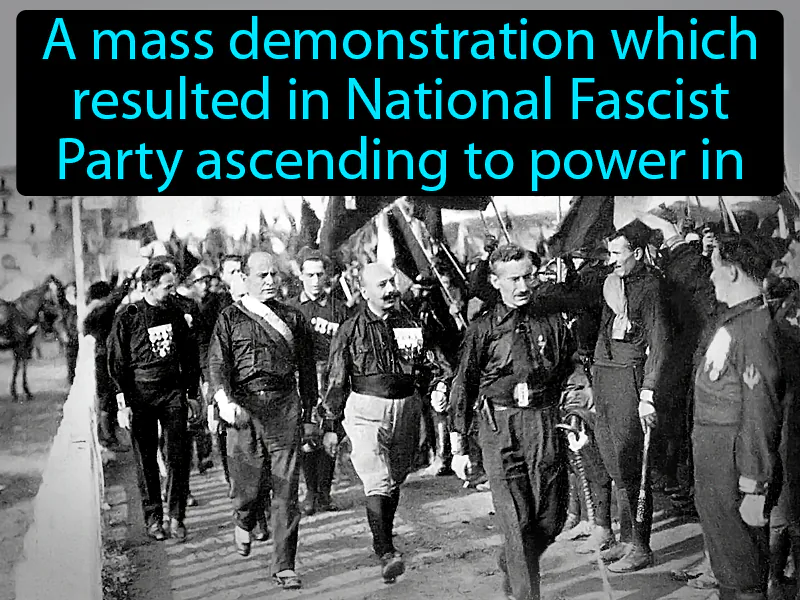March On Rome
March On Rome: Easy to understand
The March on Rome in 1922 was crucial because it marked the rise of Benito Mussolini and the Fascist Party, establishing a totalitarian regime in Italy. This event highlighted the dangers of political instability and the appeal of authoritarian leaders promising order and national strength. Today, it serves as a warning about how economic hardships and social unrest can lead to the erosion of democratic values. These lessons are relevant now as individuals must remain vigilant against political movements that threaten personal freedoms and democratic institutions. For example, when people vote or engage in civic activities, they contribute to safeguarding democracy against authoritarian tendencies.

Practice Version

March On Rome: A mass demonstration which resulted in National Fascist Party ascending to power in the Italy. March on Rome. The March on Rome was a 1922 event where Mussolini and his followers forced the Italian king to hand over power, marking the start of fascist rule.